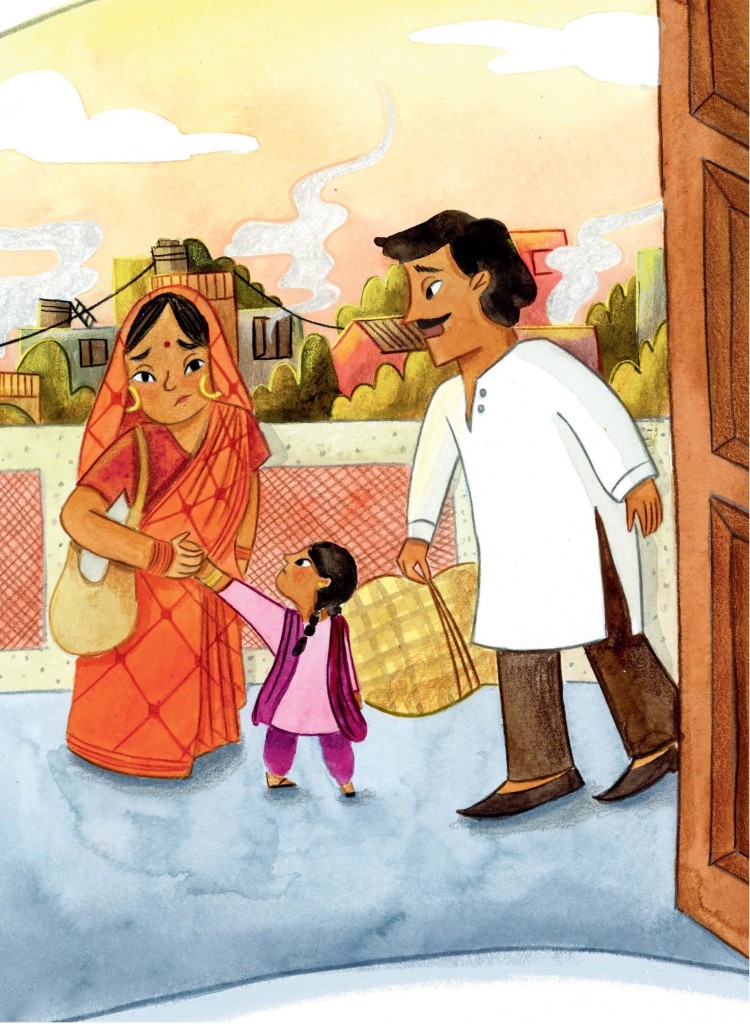Once Upon a Sari – written by Zenia Wadhwani, illustrated by Avani Dwivedi
Tundra Books, 2024

Once Upon a Sari is a gorgeous and profound book. It opens with a girl standing on a stepstool to reach a wardrobe. She opens it, and explores her mother’s collection of saris. The profusion of color and texture emerges in a description tinged with synesthesia: “…rivers of turquoise, pistachio, and mehndi greens…Hues of spicy turmeric, paprika and cinnamon browns.” The girl, Avani, is overwhelmed with beauty. The two-page spread is covered in the garments that remind her of “…a million shining stars…a bed of red and pink roses.” Beginning as a celebration of Indian culture, family, and the delights of lovely clothing to a child, it then expands to consider the impact of historical events on individual people. Zenia Wadhwani makes this transition seamlessly, as a mother teaching her child an important lesson while leaving some aspects unsaid.


First, the mother does not become upset at the mess her daughter has created. She empathizes with her curiosity, revealing that she had also been drawn to her mother’s saris and had created the same bit of temporary chaos. Although she is smiling, the mother’s comment, “Every sari has a story,” foreshadows how the stories may not all be as wonderful as her daughter anticipates. One sari is a gift from Avani’s grandfather to her mother, and another was worn at her uncle’s wedding. Seated at her vanity, Avani’s mother is dressed in gold, picking up the same gold of a glowing lamp. She mentions specific locations imbued with memories: Gujarat, Tamil Nadu, the city of Delhi.

Eventually, Avani’s mother picks up a sari that evokes a different kind of memory, one of fear and danger, as partition divided the Indian subcontinent. Her narrative of this time uses carefully chosen words. Life was not safe anymore. Avani’s grandmother, Nani, and her family, like so many refugees, had to “…leave their home and make a long and difficult journey.” Avani Dwivedi’s picture shows both suffering and dignity. The darkness of a night flight turns to the light of a new home, one that is safer, but also lonely for Nani. The colors in succeeding pictures alternate between ones where darkness or light predominates, along with earth and jewel tones.
Avani wants to learn about the sari itself. She asks her mother to return from her thoughts about the past, and her mother senses that Avani is both curious and anxious. The sari that had belonged to Nani on her flight has become a symbol of strength, and ways to “create joy” after experiencing tragedy. That responses exactly reflects the process of the book itself, where author and illustrator fold the difficult realities of one family’s history into a fabric of language and art.

